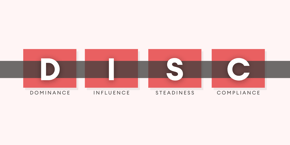Customer relationship management (CRM) systems are swiftly becoming an essential practice for many companies of all shapes and sizes.
With over 60% of distributors already using CRM in some capacity, these tools are an easy way for companies to stay on top of their game and keep customers happy.
And yet, recent research from MDM states that a measly 36% of users are actually happy with the level of ROI generated from their CRM system. So, it begs the question: why isn’t CRM working hard enough for distributors?
Here are two simple reasons why CRM simply isn’t enough for the distributors of today and why you need both CRM and analytics to really thrive in today’s bustling, hyper-competitive world.
CRM doesn’t contain sales information
Your interactions with your customers, their profile, and the name of their pet dog are all important in fostering rapport, however, they are only one piece of the puzzle.
Your CRM contains no hard facts with which to make smarter business decisions. While you know who your customer is and where they spent last summer, you will have little to no idea how much they spent with you, when they last spent, what they bought, or even what they should be buying, not without spending hours digging back through endless sales reports anyway.
While you might know the softer, more personal side of your customer like the back of your hand, it isn’t enough as a distributor where customers expect you to respond to their individual tastes preferences and even take note of their latest purchases.
How can analytics help?
Analytics tools give you a complete overview of your customer. While your CRM is providing all the customer information you need, an analytics tool will supply the transactional information you need to uncover opportunities and close sales successfully.
Looking after hundreds of customers and prospects – not to mention the thousands of products you sell – information overload can quickly become a big part of your day. BI tracks your customer purchasing behavior and provides you with the intelligence to spot opportunities and make informed business decisions.
You can make sales meetings truly personal when you’re using both a CRM and an analytics solution. Forget talking about the weather or last night’s game, and you’ll be making sales left, right, and center when the two are working in perfect harmony.
CRM is reactive, not proactive
There’s no getting away from how imperative a CRM system is however, CRM is exactly what it says on the tin – a management tool. It is purely reactive and relies entirely on your users to input the data in a way that the rest of the business can use.
This lends itself to human input error, variations in data entry style, and data being deliberately omitted. A CRM is fed entirely by the information you and your users manually record. It is this combination of reliable and less reliable data that creates your customer profiles.
Your CRM won’t prompt you to follow up with customers, nor does it alert you when their spending may be dropping off, leaving your customers open to influence from your competitors.
This is simply because your CRM is a reactive tool that stores information and heavily relies on your team to update it regularly. The very nature of it means that you only ever react to issues or opportunities as they arise; being proactive, however, is the key to a successful business in today’s market.
How can analytics help?
Research from Salesforce.com indicates that a staggering 57% of high-performing sales teams rely on sales analytics compared to just 16% of their underperforming counterparts. With statistics like that, its place in a distributor’s sales toolkit shouldn’t really be coming into question.
Sales analytics systems constantly mine your sales data and alert you to any changes in customer spend, any sales opportunities you may be missing, or even prompt you to check in with your top 20 customers regularly. This proactivity will spread throughout your workforce and give your people the ability to ensure that a trick is never missed when it comes to sales or business opportunities.



